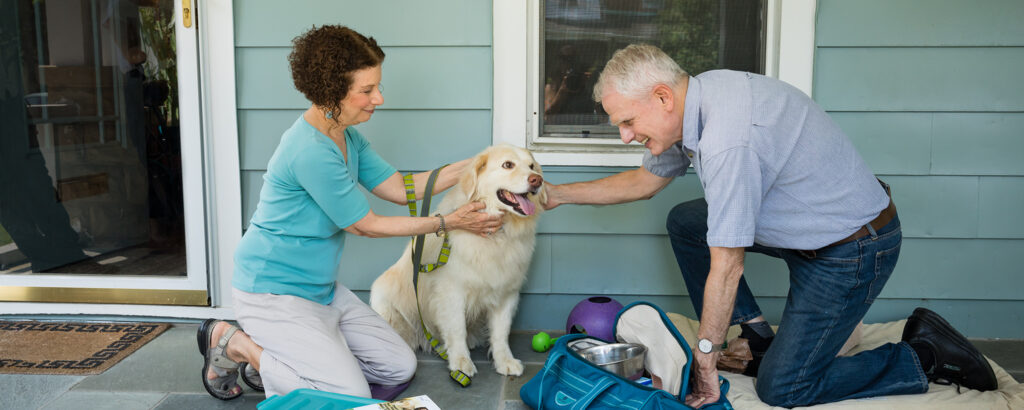How Often Should I Feed My Dog?

Puppy Nutrition
6 to 12 weeks
Puppies should eat food that is nutritionally balanced to meet their bone and muscle growth needs.
A high-quality puppy food contains the right amount of protein, DHA, and vitamins to keep your puppy growing at the right pace. For puppies aged six to twelve weeks, four feedings per day are recommended. It’s also a good idea to give puppies moistened food at first to help them chew.
3 to 6 Months
6 to 12 Months
Reduce feedings to twice daily at this age. Keep in mind that your dog’s energy level may decrease after neutering, so now might be a good time to transition from nutrient-rich puppy food to adult food. While you should always consult your veterinarian about your puppy’s specific growth, smaller breeds should typically transition to adult food at 10-12 months, while larger breeds may take a little longer — 12-14 months or even longer. Puppy food should be fed to larger breeds for a longer period of time, up to 14 months.
Consult your veterinarian about proper feeding regiments, as with anything else that affects your dog’s overall health and development. While the packaging of dog food bags and cans frequently includes feeding instructions, feeding habits vary from dog to dog depending on breed, weight, health conditions, and other factors. Your vet will be able to give you the best advice on the size proportions you should feed your puppy to help them grow healthy.
Adult Dog Nutrition

Once your dog is fully grown, you must feed dog food that keeps them healthy and fit so that they do not develop health problems. Food selection and portion size should be tailored to the breed, size, and lifestyle of the animal. Again, this is a good discussion to have with your veterinarian to ensure they are getting enough nutrition.
Years 1 through 7
Adult dogs are typically fed two half-portions per day by their owners. How much does that cost? It is dependent on your dog. Measure food instead of eyeballing it to ensure your dog gets the right amount each day. Keep an eye on your dog for signs of weight gain and, if necessary, reduce food intake under the supervision of your veterinarian. Some signs that your dog is overweight include being unable to feel their ribs, the absence of a discernible waist, fat pads over the hips and base of the tail, and a waddling gait.


